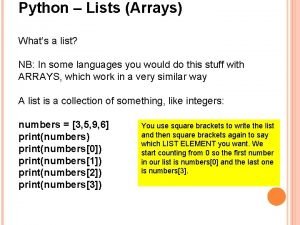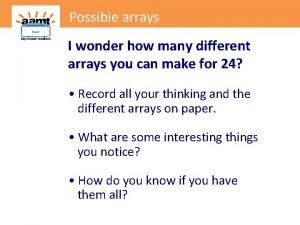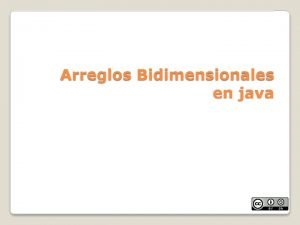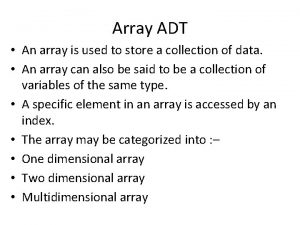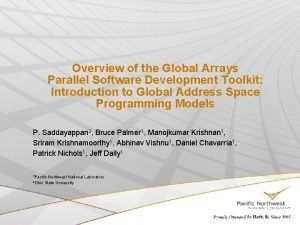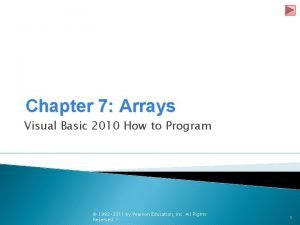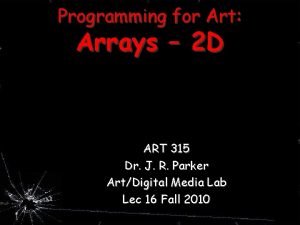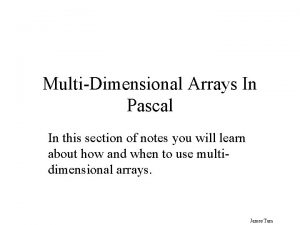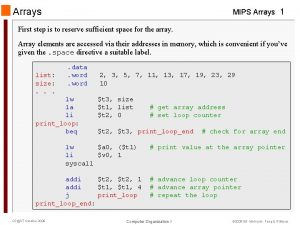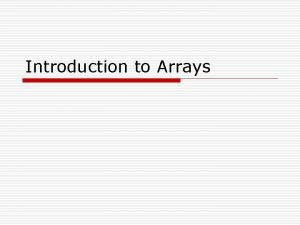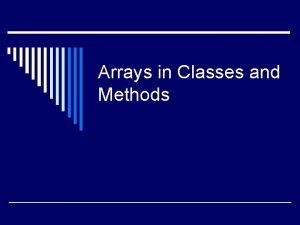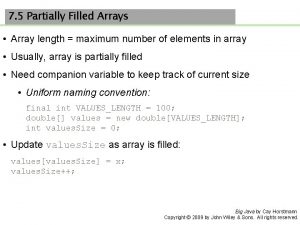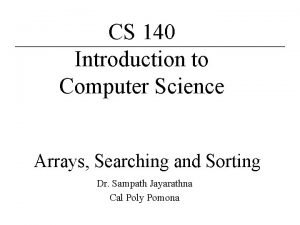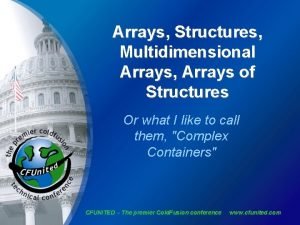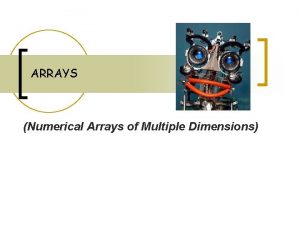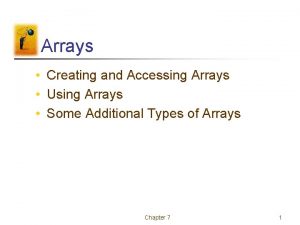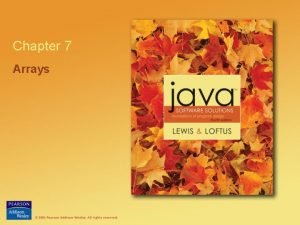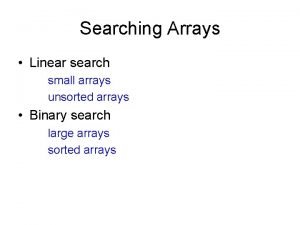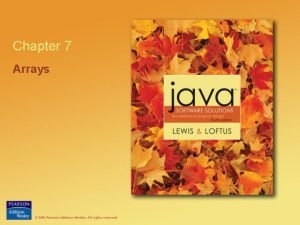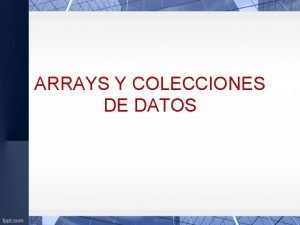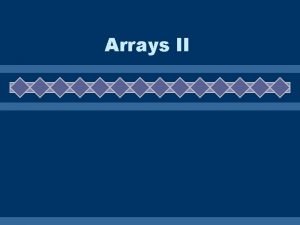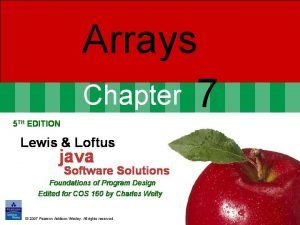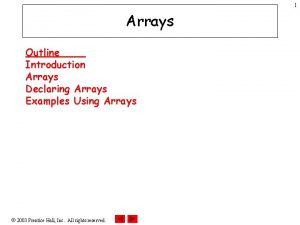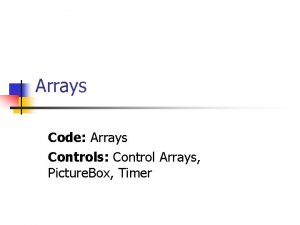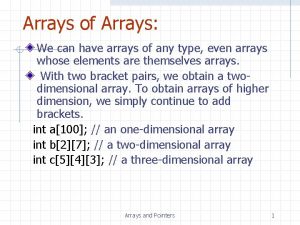the sensitivity of km 3 arrays Sensitivity Predictions
















- Slides: 16

the sensitivity of km 3 arrays Sensitivity Predictions from hydrophone array simulations ARENA 2008… Jonathan Perkin Roma Jun 08 Acoustic Cosmic Ray Neutrino Experiment

• Use event generators (ANIS, Pythia etc. ) to determine hadronic energy fraction (y) the sensitivity of km 3 arrays Simulation Chain • Simulate cascades (GEANT, CORSIKA etc. ) and integrate energy to determine acoustic pulse [see Astropart Phys V 28 3 p 366 -379] • Determine (linear) peak pressure v. s neutrino energy relation: scale pulses P ≈ E. y. c 2β/Cp (Pa/e. V) • Propagate sound ‘rays’ (freq. independent) and apply attenuation models (linear attenuation = no phase distortion) • Simulate a detector response: naively, detection. ARENA 2008… limited by minimum 4 hydros. hit Jonathan Perkin Roma Jun 08 Acoustic Cosmic Ray Neutrino Experiment

• Same equation as Simon introduced the sensitivity of km 3 arrays The sensitivity calculation – follows formalism laid out in “FORTE satellite constraints on ultra-high energy cosmic particle fluxes” Phys. Rev. D 69 (2004) 013008 ar. Xiv: astro-ph/0309656 v 2 • Φ(E)= Sup / E×λ(E) – Φ(E) is the limit on the differential flux [d. Nν/d. Ed. AdΩdt] in units of Ge. V− 1 cm− 2 sr− 1 s− 1 – Sup is the upper limit on the number of detected events that one places. • Assuming no events seen, 95%C. L. upper limits Sup =3. 0 (or 2. 3 for 90%) in the absence of background – λ(E) is the number of events that we would detect if a unit differential flux were incident on our detector at a unique energy E, for time T • It can there-fore be written as: λ(E)=σνN(E)×ρ×NA×V× 2π×f. MC(E)×T where: Jonathan Perkin – – – σνN is the cross section ρ is the density of the medium NA is Avogadro’s Number V is the fiducial volume f. MC is the fraction of MC events that are detected at energy E Roma Jun 08 Acoustic Cosmic Ray Neutrino Experiment ARENA 2008…

• Errors dominated by uncertainties in hadronic interaction models and extrapolation of neutrino-nucleon cross sections – 20 -30% difference between models/parameterisations observed in CORSIKA/Geant studies – similar error on (SM) cross section the sensitivity of km 3 arrays Sources of uncertainty Kwiecinski et al ar. Xiv: hep-ph/0004109 v 1 ARENA 2008… Jonathan Perkin Roma Jun 08 Acoustic Cosmic Ray Neutrino Experiment

the sensitivity of km 3 arrays Recap of results • BZ/GZK neutrinos (sub optimal ‘guaranteed’ signal)-can we detect? – generated examples of arrays to do this c. f. Perkin, Timo’s results circa (Arena 05) N. B. no refraction – Sound propagates for many kilometres in water, why not think BIG? 50 x 1 km 3 2 hydros/km 3 30 x 50 x 1 km 3 200 hydros/km 3 1, 1500 km 3 cylindrical array, 100 hydros/km 3 (2007) • Thousands of Jonathan Perkin km 3 not really practical. . . Roma Jun 08 ARENA 2008… Acoustic Cosmic Ray Neutrino Experiment

• Sensitivity of an array is dependent on density, size, threshold and exposure • Varying each of these has a particular effect on the sensitivity (model independent flux limit) curve. . . energy flux x E 2 density: (makes inflexion shallower) increases sensitivity to low energy flux size + threshold: both increase sensitivity to lower energy and flux the sensitivity of km 3 arrays Understanding the results exposure: increases sensitivity to lower flux Now, can we detect the BZ/GZK flux with a ‘realistic’ array? ARENA 2008… Jonathan Perkin Roma Jun 08 Acoustic Cosmic Ray Neutrino Experiment

• Work from 1500 km 3, 100 hydros/km 3 to a more feasible scale. . . • to 100 hydros in 1 km 3, 5 m. Pa, 5 yrs, 95%C. L. Forte Auger Anita-Lite GZK WB the sensitivity of km 3 arrays A more realistic view – reduction in size reduces sensitivity to both flux and energy ARENA 2008… Jonathan Perkin Roma Jun 08 Acoustic Cosmic Ray Neutrino Experiment

the sensitivity of km 3 arrays A more realistic view • from 100 hydros in 1 km 3, 5 m. Pa, 5 yrs, 95%C. L. • to 1100 hydros in 1 km 3, 5 m. Pa, 5 yr, 95%C. L. Forte Auger Anita-Lite GZK WB – increase in density makes increases sensitivity to low energy flux ARENA 2008… Jonathan Perkin Roma Jun 08 Acoustic Cosmic Ray Neutrino Experiment

• from 1100 hydros in 1 km 3, 5 m. Pa, 5 yr, 95%C. L. • to 1100 hydros in 1 km 3, 5 m. Pa, 10 yr, 95%C. L. Forte Auger Anita-Lite GZK WB the sensitivity of km 3 arrays A more realistic view – increase in exposure probes lower fluxes, just about grazing GZK ARENA 2008… Jonathan Perkin Roma Jun 08 Acoustic Cosmic Ray Neutrino Experiment

• from 1100 hydros in 1 km 3, 5 m. Pa, 10 yr, 95%C. L. • to 1100 hydros in 1 km 3, 5 m. Pa, 10 yr, 90%C. L. GZK WB the sensitivity of km 3 arrays A more realistic view – relaxing confidence improves penetration into GZK flux [“Neutrinos from propagation of UHE protons” Engel, Seckel & Stanev (2001)] ARENA 2008… Jonathan Perkin Roma Jun 08 Acoustic Cosmic Ray Neutrino Experiment

• ~ 1000 hydrophones in 1 km 3 desirable – Remember: the geometry defines the number of pancake ‘planes’ you can sample – Aim: to make the whole of the instrumented volume active (leave no gaps in acceptance) the sensitivity of km 3 arrays Reconstruction better with more hydros ARENA 2008… Jonathan Perkin Roma Jun 08 Acoustic Cosmic Ray Neutrino Experiment

• Create km 3 geometries based on Antares, Nemo and Ice. Cube @ 15 m. Pa, 5 yr, 95%C. L. • Bounded region 1100 randomly distributed hydros in 1 km 3: – upper (pessimistic) 35 m. Pa, 1 yr, 95%C. L. – lower (optimistic) 5 m. Pa, 10 yrs, 95%C. L. the sensitivity of km 3 arrays In context of real infrastructures ARENA 2008… Jonathan Perkin Roma Jun 08 Acoustic Cosmic Ray Neutrino Experiment

• GZK flux models are coming under increased scrutiny with the advent of e. g. Auger and ANITA; it is not the optimal region for acoustic detection • Need to put simulations in context of existing/proposed infrastures (Antares, NEMO, NESTOR, KM 3 Ne. T), thousands of km 3 unlikely to be funded any time soon the sensitivity of km 3 arrays Interpreting results • We can best improve sensitivity by focusing on threshold and exposure given a fixed size of detector. Beamforming may be key to driving thresholds down • Once the infrastructure has been determined then geometry optimisations can be undertaken. A random geometry is favourable both for point source location and angular acceptance of ‘pancakes’: how can this be implemented ARENA 2008… practically? Jonathan Perkin Roma Jun 08 Acoustic Cosmic Ray Neutrino Experiment

the sensitivity of km 3 arrays Thank you ARENA 2008… Jonathan Perkin Roma Jun 08 Acoustic Cosmic Ray Neutrino Experiment

the sensitivity of km 3 arrays Backup slides ARENA 2008… Jonathan Perkin Roma Jun 08 Acoustic Cosmic Ray Neutrino Experiment

• Results shown use a simple linear attenuation without frequency dependance and hence a phase shifts • A great deal of work has been undertaken within the collaboration in order to understand the importance of complex attenuation the sensitivity of km 3 arrays Attenuation • For the moment, because the differences in peak pulse pressure are small, phase shift and delay are ignored • Full pulse-shape analysis not yet considered ARENA 2008… Jonathan Perkin Roma Jun 08 Acoustic Cosmic Ray Neutrino Experiment
